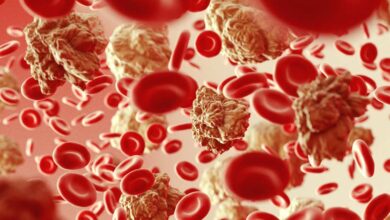Laboratory Safety: A Legal Obligation & Global Standard

Laboratory safety is a comprehensive, essential system composed of meticulously designed protocols and standardized procedures. Its primary purpose is to prevent accidents, occupational injuries, and illnesses associated with laboratory environments, whether in research, medical, industrial, or educational settings.
More than just a set of rules, laboratory safety represents a workplace culture rooted in attention to detail. It begins with proper use of personal protective equipment (PPE), such as gloves, lab coats, and safety goggles, and extends to the cautious handling of hazardous substances, including chemical, biological (e.g., bacteria and viruses), and radiological materials.
Effective safety practices are vital not only for protecting laboratory personnel and visitors but also for ensuring the accuracy of research data and preventing environmental contamination.
PPE serves as the first line of defense in safeguarding laboratory staff. Lab coats provide a protective barrier for skin and clothing against chemical or biological splashes. Gloves, selected based on material compatibility such as nitrile or latex, are critical for hand protection. Safety goggles or face shields protect the eyes from splashes or airborne debris. In environments with harmful vapors or fine airborne particles, respiratory protection becomes essential to ensure safe air quality. Consistent and correct use of PPE is fundamental to maintaining a safe and healthy working environment.
The Critical Importance of Laboratory Safety
Laboratory safety is a foundation for multiple essential areas.
Protecting Personnel
The foremost goal of any safety system is to safeguard lives and minimize risk. In laboratories where individuals interact with potentially harmful materials, protection is especially crucial. Well-implemented safety protocols help:
- Prevent direct injuries, such as cuts from broken glass, chemical burns, or slips and falls
- Minimize exposure to hazardous substances through proper ventilation and use of fume hoods
- Reduce risk of biological infections via sterilization, safe specimen handling, and proper disposal of biohazardous waste
- Ensure radiological safety in labs working with radioactive materials through shielding, dosimetry, and exposure monitoring
Legal and Regulatory Compliance
Laboratories operate within a rigorous legal framework requiring adherence to established safety standards, both nationally and internationally.
- OSHA Standards: In the United States, the Occupational Safety and Health Administration (OSHA) enforces detailed safety regulations in laboratory settings, including routine inspections for compliance
- The Joint Commission: This global accreditation body for healthcare facilities includes strict standards for laboratory safety for staff and patients alike
- Legal Responsibility: Non-compliance can lead to severe consequences such as financial penalties, operational shutdowns, and even legal action if negligence results in injury or harm. Adhering to regulations significantly reduces an institution’s legal and financial risk
Operational Continuity and Productivity
Laboratory accidents disrupt operations and productivity, with consequences extending beyond physical harm.
- Downtime: Lab activities may halt while incidents are investigated, cleaned up, and remediated
- Injury and Damage Costs: Medical expenses, worker compensation, equipment repair or replacement, and reputational damage all carry financial burden
- Loss of Research: Accidents can destroy samples, corrupt data, or damage
vital instruments, severely delaying scientific progress. - Workplace Morale: A safe environment fosters confidence and focus among staff, enhancing performance and overall lab efficiency.
In essence, laboratory safety is a strategic investment in people, scientific accuracy, and operational sustainability, making it indispensable in any modern lab setting.
Risk Identification and Management in the Laboratory
A safe, effective lab environment begins with a structured, proactive approach to risk identification and mitigation. Laboratories naturally present a wide range of potential hazards, requiring constant vigilance and a thorough understanding of threats. These risks span multiple domains, each requiring specific control strategies.
Chemical Hazards
Chemicals are integral to laboratory work but pose serious risks if mishandled. These include exposure to toxic substances that may harm the respiratory, nervous, or internal organ systems. Safe storage, proper ventilation, and appropriate PPE are necessary to manage these risks effectively.
Biological Hazards
Life sciences, medical, and microbiology labs face heightened risks from pathogens such as bacteria, viruses, fungi, and parasites. Handling these organisms demands compliance with biological containment levels (BSL-1 to BSL-4), sterilization protocols, and secure waste disposal to prevent infection.
Physical Hazards
Often underestimated, physical hazards remain a leading cause of laboratory accidents. These include sharp instruments like needles, scalpels, or microtome blades. Preventative measures include safe handling, proper organization, and prompt cleanup of spills.
Radiological Hazards
Labs using radioactive materials for research or diagnostics must address ionizing radiation (gamma rays, X-rays, alpha, beta) and non-ionizing radiation (UV, lasers, microwaves). Safety requires shielding, dose monitoring, and training.
Pressure and Heat-Related Hazards
High-pressure and high-temperature equipment present additional risks. Pressurized gas cylinders, such as those containing nitrogen, hydrogen, or oxygen, can explode if damaged or overheated. High-speed centrifuges may fail if unbalanced. Autoclaves, used for steam sterilization, pose burn and explosion risks. These tools require routine maintenance, operator training, and strict adherence to manufacturer guidelines.
Establishing Control: Protocols and Safety Culture
Risk control starts with identifying hazards, analyzing materials, procedures, and equipment, and documenting risks and mitigation steps clearly in SOPs. SOPs must be accessible and understandable to all. A strong safety culture is vital, with safety awareness integrated into daily routines. Everyone shares responsibility for safety, fostering a laboratory environment of responsibility, collaboration, and care.














